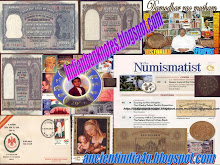3500years old Cover and letter made of CLAY from Sumeria
3500years old Cover and letter made of CLAY from Sumeria
Cover and letter on clay tablet with crunieform inscription of Akkadians,found in Sumerian region is 3500years old.Even in this time court Judgments were given in sealed cover,the Difference is Clay cover and document are not of paper but of CLAY baked ofter writing and was signed by TWO JUDGES BENCH,the the petitioners are nine village heads,with seals of Judges,an Museum collection[OIM]
This is the First example of writing,postal system,Judiciary,etc
The cuneiform script is one of the earliest known forms of written expression. Created by the Sumerian’s from ca. 3000 BC, cuneiform writing began as a system of pictographs. Over time, the pictorial representations became simplified and more abstract.
The cuneiform writing system originated perhaps around 2800 BC in Sumer; its latest surviving use is dated to 75 AD.
The cuneiform script underwent considerable changes over a period of more than two millennia.
Cuneiforms were written on clay tablets, on which symbols were drawn with a blunt reed called a stylus. The impressions left by the stylus were wedge shaped, thus giving rise to the name cuneiform .
The Sumerian script was adapted for the writing of the Akkadian, Elamite, Hittite languages, and it inspired the Old Persian and Ugaritic national alphabets.
The characters consist of arrangements of wedgelike strokes generally impressed with a stylus on wet clay tablets, which were then dried or baked. The history of the script is strikingly parallel to that of the Egyptian hieroglyphic The normal Babylonian and Assyrian writing used a large number (300–600) of arbitrary cuneiform symbols for words and syllables; some had been originally pictographic. There was an alphabetic system, too, making it possible to spell a word out, but because of the adaptation from Sumerian, a different language, there were many ambiguities. A single symbol could be used to represent a concept, an object, a simple sound or syllable, or to indicate the category of words requiring additional definition. Cuneiform writing was used outside Mesopotamia also, notably in Elam and by the Hittites. There are many undeciphered cuneiform inscriptions, apparently representing several different languages. Cuneiform writing declined in use after the Persian conquest of Babylonia (539 B.C.), and after a brief renaissance (3d–1st cent. B.C.) ceased to be used in Mesopotamia.
Tags: akkadian, alexander, ancient coins, Ancient Science, ancientcoins, ancientscience, ANDHRA, Astronomy, Banking, banknotes, BANKOFBENGAL, bengal, bible, bombay, buddhistscience, claycover, clayletter, coins, Coins of BHUDDHA, Currency notes, echo sound, Epigraphy, farmans, firstwriting, Forts, geography, gods, history, HISTORY OF BANKING, historyofhandloom, Hyderabad.BHUDDHISM, India, indiastocknote1891, islamicscience, kingsalaryreciepts, Mathematics, Metallurgy, moghul, monuments, musham, mythology, news, Numismatics, Philately, Playing Cards. Stamps. Coins, postalcover, postalhistory, Pyretic, Rulers, satavahana, Science, Sciences, sculptures, SealedcoverJudgement, SOUTH INDIA, speedoflight, stamps, sultanate, sumeriancover, Telugu cinema, telugunews, teluguscience, TEMPLES, textiles, Vaastu, vedic literature, WONDERS






No comments:
Post a Comment